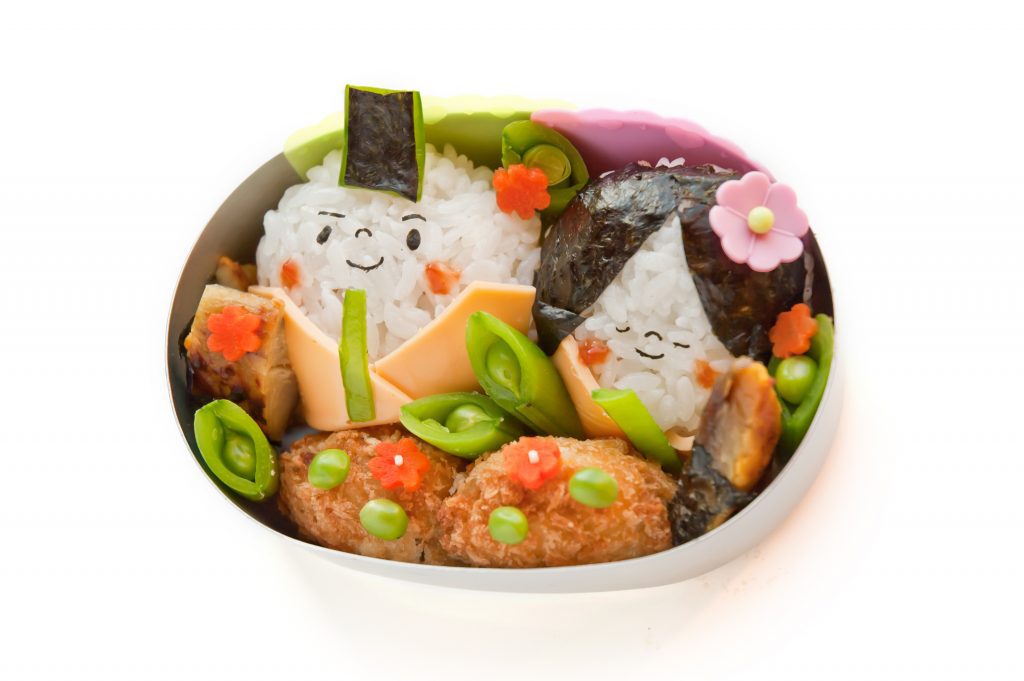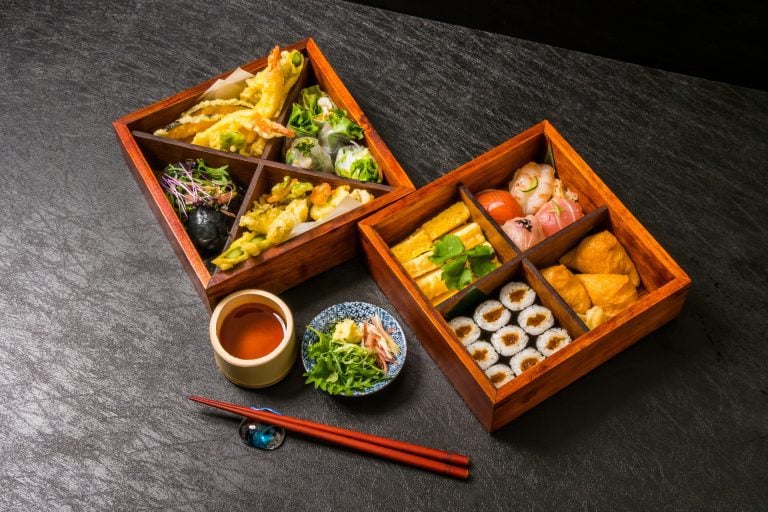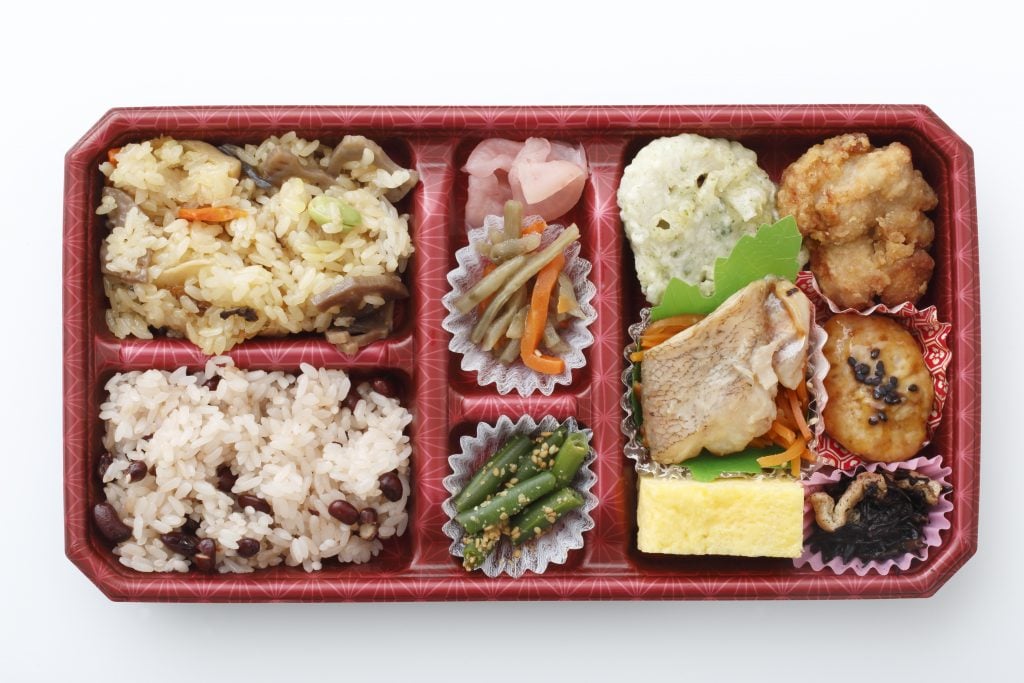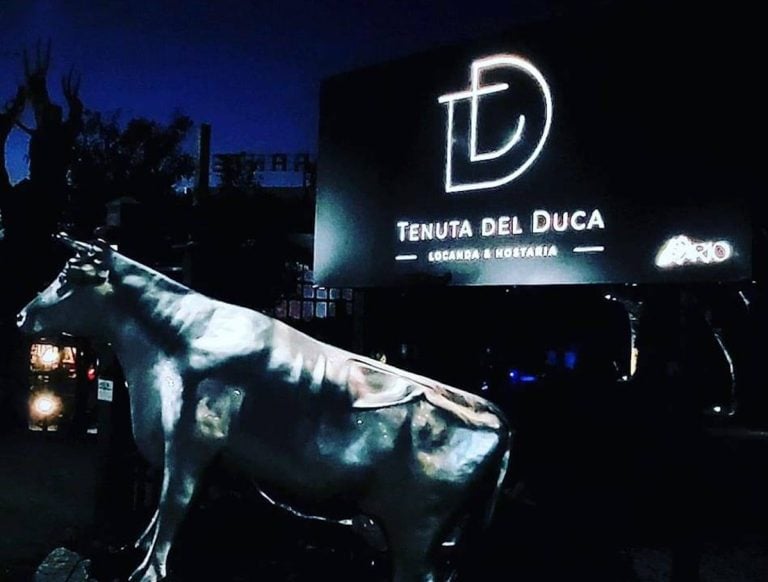The origin of bento
In Japan it can be found everywhere, from the cheapest stores to subway stations and restaurants, but it is first and foremost a home-made tradition: we are talking about bento, the typical practical and attractive lunchbox that has conquered Europe as well. It may seem trivial, but this Japanese lunchbox has a long tradition: the first traces date back to the late Kamakura period (1185-1333), when boiled and then dried rice eaten as a snack began to spread, sometimes rehydrated with hot water; a more modern version can be traced back to the Azuchi-Momoyama period (1568-1600), when lacquered wooden boxes were commonly used to carry food, especially during hanami, the cherry blossom season, or during outdoor tea ceremonies. It was, however, samurai Oda Nobunaga who first popularized the concept of bento, by distributing simple and comfortable meals to castle guests.
Aluminum and railway bento boxes
Bento culture became more refined during the Edo period (1603-1868). Travelers would carry the lunchbox on their belts, consisting of several onigiri wrapped in bamboo leaves. The success of the ekiben, the railway bento box, was ensured after rail travel boomed during the Meiji period (1868-1912). The first sale is believed to have been sold at the Utsunomiya station in Tochigi prefecture in 1885, containing two onigiri and takuan, the typical pickled daikon radish wrapped in bamboo leaves. Over time, the materials also changed, and so aluminum bento boxes were introduced in the Taisho period (1912-1926). Easier to clean and more appealing, they have been then replaced by those in Alumite, a lighter and more heat resistant Japanese aluminum alloy. And that’s how the perfect lunchbox to take to work still trending today was born.
How to make bento
Another turning point for bento came after the 1980s, with the advent of konbini, small convenience stores that sell everyday items, and the spread of the microwave oven, which makes it possible to prepare and heat more dishes quickly. Practicality is the watchword: the name bento derives from the Southern Song dynasty slang term biàndang, meaning convenient. Over the centuries, each culture has adopted its own bento lunchbox recipes, but the idea of a well-balanced meal lunch has remained. A good bento box recipe requires, as a matter of fact, different preparations to be distributed in multiple containers of various sizes. It is important to pay attention to the division of food, especially sauces or those that could leak, even if bento boxes are provided with all the necessary boxes and useful accessories for a complete meal. The chromatic contrast is a key feature: the Japanese love to use many colors in the bento box, in order to make the lunch break even more appetizing.

Types of bento
A well-prepared bento lunchbox should have the right amount of four food groups, including carbs, proteins, veggies and fruit, with carbs and proteins being the greatest proportion. Here’s a short list of types of bento boxes:
Makunouchi is the most common one which consists of rice, along with fish, pickles, eggs and vegetables
Noriben is a bento that consists of seaweeds marinated in soy sauce
Sake is a bento with grilled salmon being the main dish
Shikaeshiben is a revenge bento, where wives make bentos to get back at their husbands by writing insults in the food, or making it inedible by putting chile peppers or other spicy foods in it
Shidasi is a bento prepared in restaurants
Hinomaru is a bento consisting of rice and umeboshi, pickled ume fruits, named after the Japanese flag, Hinomaru. From 1939 it spread all over the country, and in later years it rose to the symbol of national unity and wartime mobilization.
Hokaben is a take-out bento
Hayaben is a bento to be eaten before lunch
Chuka is a Chinese food bento
Sanshoku is a three-color bento
Kyaraben is a bento born in the '90s, where food is arranged artistically to match characters from anime, manga or video games
Ekiben is an inexpensive and filling bento sold at train stations
Soraben is a bento sold at airports
by Michela Becchi



 The best still wine from Alto Adige with the best quality-price ratio is produced by a historic winery famous for Its sparkling wines
The best still wine from Alto Adige with the best quality-price ratio is produced by a historic winery famous for Its sparkling wines Travel + Leisure bets on Italy: introducing the new magazine for curious travellers
Travel + Leisure bets on Italy: introducing the new magazine for curious travellers The best value-for-money red wine in Calabria is produced by a nearly Two-Century-old winery
The best value-for-money red wine in Calabria is produced by a nearly Two-Century-old winery Italian wine takes centre stage in Kenya: Gambero Rosso brings 50 producers to Nairobi
Italian wine takes centre stage in Kenya: Gambero Rosso brings 50 producers to Nairobi Great fish and meat dishes at the must-visit restaurant just a step away from Fiumicino Airport
Great fish and meat dishes at the must-visit restaurant just a step away from Fiumicino Airport






